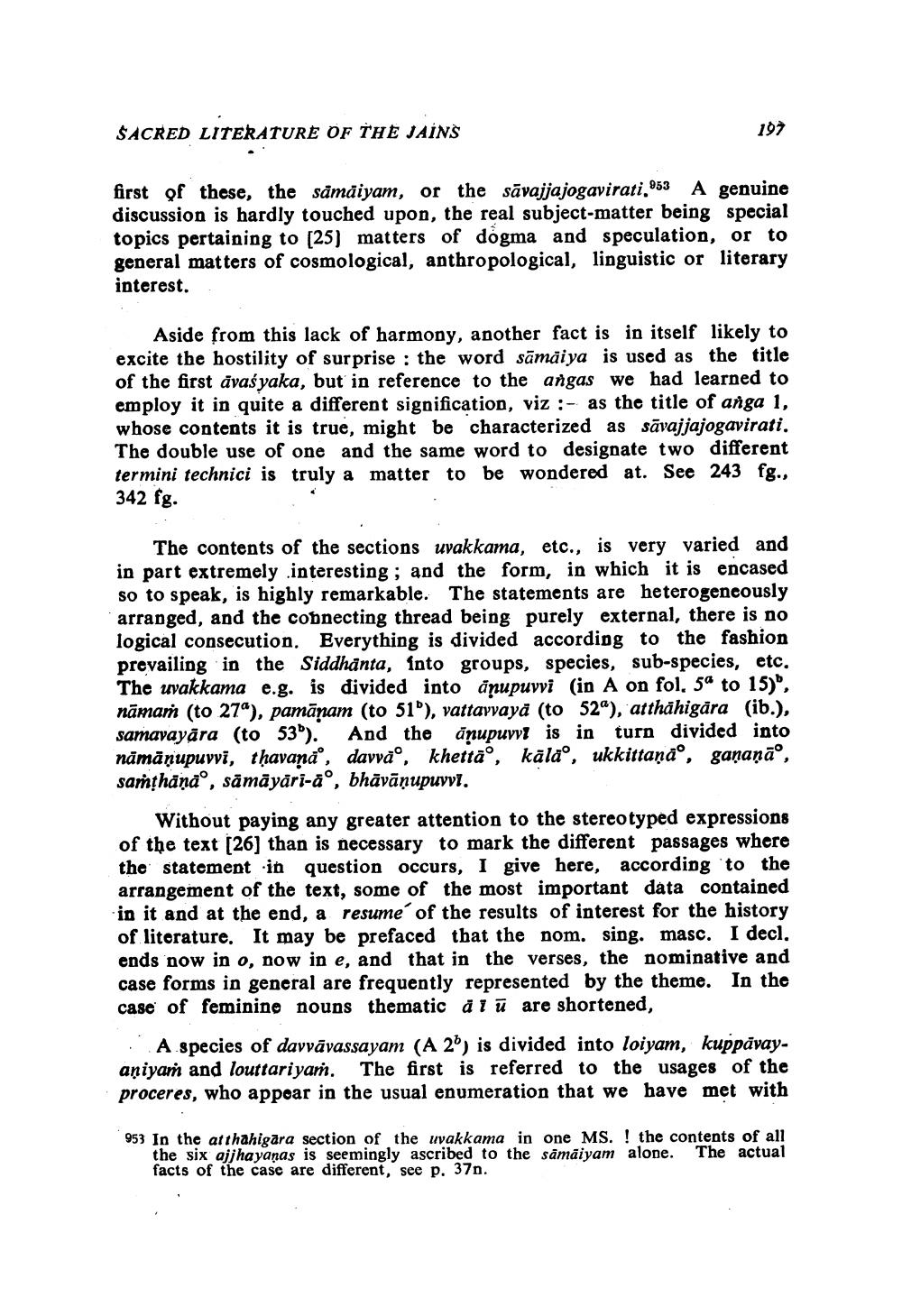________________
SACRED LITERATURE OF THE JAINS
first of these, the såmäiyam, or the sāvajjajogavirati, 953 A genuine discussion is hardly touched upon, the real subject-matter being special topics pertaining to [25) matters of dogma and speculation, or to general matters of cosmological, anthropological, linguistic or literary interest.
Aside from this lack of harmony, another fact is in itself likely to excite the hostility of surprise : the word sāmaiya is used as the title of the first avaśyaka, but in reference to the angas we had learned to employ it in quite a different signification, viz:- as the title of anga 1, whose contents it is true, might be characterized as sāvajjajogavirati. The double use of one and the same word to designate two different termini technici is truly a matter to be wondered at. See 243 fg., 342 fg.
The contents of the sections uvakkama, etc., is very varied and in part extremely interesting; and the form, in which it is encased so to speak, is highly remarkable. The statements are heterogeneously arranged, and the connecting thread being purely external, there is no logical consecution. Everything is divided according to the fashion prevailing in the Siddhanta, into groups, species, sub-species, etc. The uvakkama e.g. is divided into anupuvvi (in A on fol, 5% to 15), nāmam (to 27o), pamānam (to 51'), vattavvaya (to 52o), atthähigara (ib.), samavayāra (to 53'). And the anupuvvl is in turn divided into nāmāņupuvvi, tủavana, davváo, khettao, kālao, ukkittaņão, gaņaņā°, sarthanao, sāmāyāri-ao, bhāvānupuvvi.
Without paying any greater attention to the stereotyped expressions of the text [26] than is necessary to mark the different passages where the statement in question occurs, I give here, according to the arrangement of the text, some of the most important data contained in it and at the end, a resume of the results of interest for the history of literature. It may be prefaced that the nom. sing. masc. I decl. ends now in o, now in e, and that in the verses, the nominative and case forms in general are frequently represented by the theme. In the case of feminine nouns thematic à l ū are shortened,
A species of davvāvassayam (A2) is divided into loiyam, kuppävayaniyam and louttariyar. The first is referred to the usages of the proceres, who appear in the usual enumeration that we have met with
953 In the at thahigara section of the uvakkama in one MS. ! the contents of all
the six ajjhayanas is seemingly ascribed to the sämäiyam alone. The actual facts of the case are different, see p. 37n.




